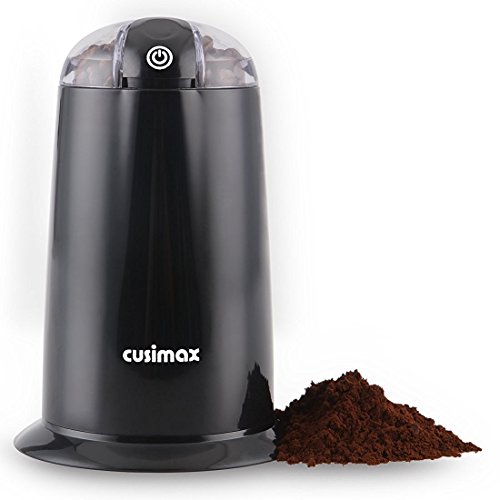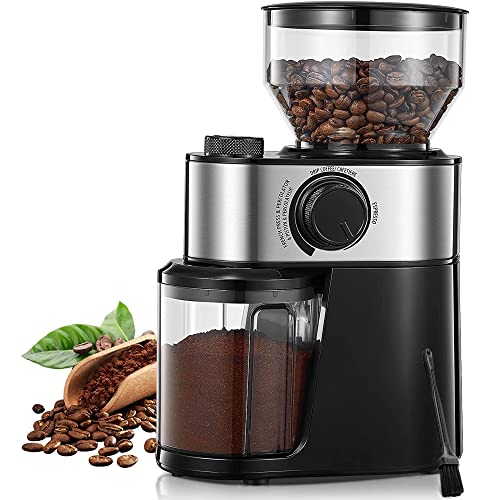 The Advantages of a Ceramic coffee beans grinder Grinder
The Advantages of a Ceramic coffee beans grinder Grinder
 Ceramic grinders are known for their longevity and durability. They last longer than steel blades, and they won’t corrosion or rust when exposed to warm temperatures. However, they’re not as sharp as stainless steel.
Ceramic grinders are known for their longevity and durability. They last longer than steel blades, and they won’t corrosion or rust when exposed to warm temperatures. However, they’re not as sharp as stainless steel.
A dual-tool grinding head consists of a wheel made of ceramic for rough grinding and a movable wheel for finishing grinding. This new technology allows the shaping of surfaces with variable curvature using one machine tool.
Blades with high-strength
The high-strength blades of the ceramic grinder are constructed of a durable material that keeps its sharp edge for longer than steel. This feature allows you to keep the quality of the coffee beans which is a crucial consideration when choosing the right grinder. This feature also ensures a consistent coffee grind, which is essential for an optimal process of brewing. This is particularly important when brewing an espresso because a discordant grind can result in poor extraction.
The durability of a ceramic grinder makes it easier to clean than other grinders. This is because the ceramic burrs are not prone to rust-related contamination and other metal particles. Additionally, the non-metal blades do not leave marks on stone or tile surfaces, which could require additional cleaning. Additionally, ceramic blades are less susceptible to corrosion and won’t alter the taste of your coffee machine grinder.
Ceramic blades are a new product, first created for industrial processes that required round rotating blades and later made available to kitchens at home. They are more durable, however their cost and lifespan should be taken into consideration. The long-term benefits could be worth the price of a ceramic knife.
All ceramics start out as clay or powder, which are then mixed with water or a binding agent before being then pressed into their final form. The resulting “green” ceramics are fairly soft and difficult to machine, so they are usually fired or “sinterned” to harden them. After that, they can be machined fairly easily.
Ceramics are used in many manufacturing processes, from semiconductors to surgical instruments. Zirconia is a strong and hard material. Zirconia components can be created using a variety of techniques like laser cutting and breaking, scribing, and mechanical machining. The resulting parts can then be inspected and polished to reveal their internal microstructure. This allows the exact properties of the ceramic be analyzed.
Non-stick coating
The ceramic nonstick surface of grinders is designed to prevent the accumulation of resin. It is easy to clean and does not rust unlike other metals. It is also odorless, long-lasting and resistant to chemicals and scratches. However there are many different types of nonstick coatings that are the same. It is crucial to know the differences between various types of coatings, such as how many layers are there and whether they are reinforced or not.
Nonstick coatings date back to the time of Greek cookware. Archeologists have discovered pots with a coating on them to prevent dough from sticking. However, the modern nonstick coating was accidentally discovered in 1938 when a Chemours employee named Roy Plunkett accidentally created polytetrafluoroethylene (PTFE). This heat-resistant, high-density synthetic chemical compound is unique in the sense that it does not permit oil droplets to form on its surface. It was trademarked as Teflon, and began appearing in cookware as early as the 1960s.
Nonstick grinding materials are used in a variety of industrial manufacturing processes. Form grinding is a cylindrical process that produces parts with the exact shape desired. Several types of materials are utilized to create these components which include Yttria stabilized zirconia and Alumina. The advantages of these materials are their low cost as well as their excellent wear resistance and chemical stability.
Ceramic grinding tools also help to control the heat generated by the milling process. A properly designed cooling system is essential for maintaining the integrity of the workpiece and extending tool life. This is because excessive heat can cause the structure of the pore structure of the grinding wheel to break, resulting in the loss of precision in dimensional measurements.
SLX has developed a V2.5 ceramic nonstick surface for their grinders that functions similar to your typical Teflon frypan. This coating is completely inert and doesn’t contain PFOA or PTF. It is FDA certified safe for contact with food and is covered by a lifetime warranty. The SLX grinders also have an engraving of PTFE patent and lot number to ensure its authenticity.
Easy to clean
Ceramic grinders are easier to maintain than steel ones, as they don’t retain oil and are less prone to heat buildup. Ceramic grinders also require regular cleaning to keep their excellent working condition. It is recommended to clean your grinder every week to avoid creating a sticky mess. This will ensure that it’s free of any contaminants and won’t alter the flavor or smell of your marijuana.
You should always remove the lid and hopper, as well as any gaskets that seal the lid. Wash these components with hot, soapy water and then rinse them thoroughly. After washing, you can use a brush to scrub the burrs as well as the internal areas of your grinder. Rinse and dry the grinder thoroughly to avoid the formation of rust.
Ideally, you should use a stiff brush or paintbrush to get rid of stubborn gunk from difficult-to-access areas of your grinder. When you’re done, use a vacuum cleaner or hose attachment to soak up the remaining residue. Be careful not to suck in any screws or pieces of your grinder. After you’ve finished, your grinder will look like new.
If you don’t have a vacuum cleaner or brush you can boil your metal grinder to cleanse it. To do this simply fill a pan with warm milk and heat it up to about 150 degrees Fahrenheit (66 Celsius). When the temperature is right then submerge your steel grinder in the milk. After about an hour, take out the grinder and scrub it with a toothbrush. Then, rinse it thoroughly with hot water. Allow it to dry completely.
If you don’t wish to use chemical solutions to dry your grinder, you could use the back of an AC unit or a hairdryer. Be sure to clean the hopper, bin and body with a lint-free cloth. Avoid using the blower nozzle in close proximity to moving parts as it can melt plastic or paint. You can also employ a commercial cleaning solution, such as the ones used by coffee shops, to remove the oily residue.
Durable
Ceramic grinders are not rusty and are not susceptible to corrosion. Ceramic is also renowned for its high hardness. This makes it ideal for grinding tasks that require precision. This is why ceramic grinders are favored by home chefs and professional baristas. They are also less expensive than stainless steel grinders. This is why they are a great choice for budget-conscious shoppers.
A ceramic smart grinder‘s durability is heavily dependent on its kind of construction. The sharpness of the blades and their durability are affected by the material used to make them. It is crucial to select the right ceramic grinding machine that has high-quality stones that are properly seated inside the grinder. It’s also important to keep the grinding wheels cool and free of debris by making use of a lubrication system as well as appropriate cutting fluid. Ceramics can be damaged by heat, therefore it’s best to choose a lower speed setting in order to minimize friction.
Ceramic burrs also have a lower thermal conductivity than stainless steel ones. This can help preserve the desired flavor characteristics of the grinding process by reducing the chance that the coffee compounds could be damaged by overheating. They are also more resistant to wear, which enables them to maintain their sharp edge for longer.
Ceramic grinders also produce less fines, and store less oil, leading to cleaner grinding and less residue on the grinder. This makes them less difficult to clean and can substantially reduce maintenance costs in comparison to steel grinders.
A ceramic grinder can also withstand higher temperatures compared to stainless steel. This makes it a great option for environments that have a wide range in temperatures at ambient. This advantage is especially useful for espresso machine with grinder-based beverages that are typically prepared at higher temperatures than other types of coffee.
Both kinds of grinders have advantages, but it’s important that you weigh them against each other. Grinders made of stainless steel typically come with a lower upfront cost and provide a luxurious feel, but they may become duller or damaged more easily, which can lead to higher maintenance costs as time passes. Ceramic burr grinders, however is more durable and produces the same size of grind however it is more expensive at first.
